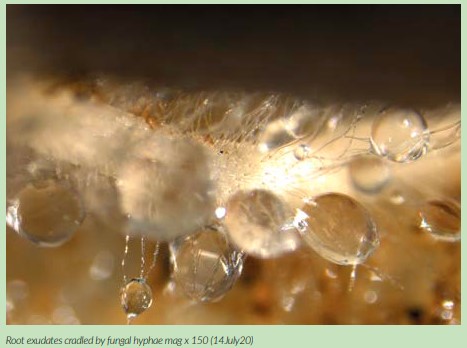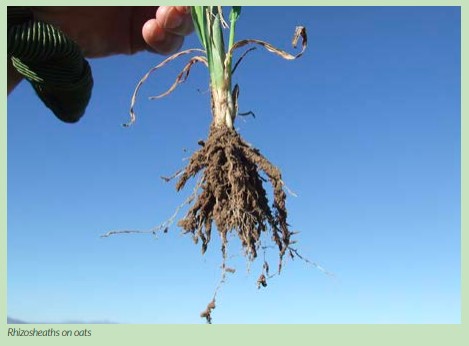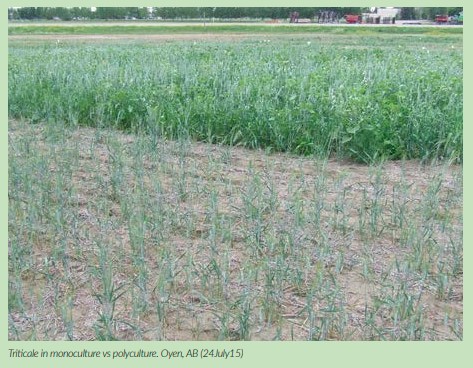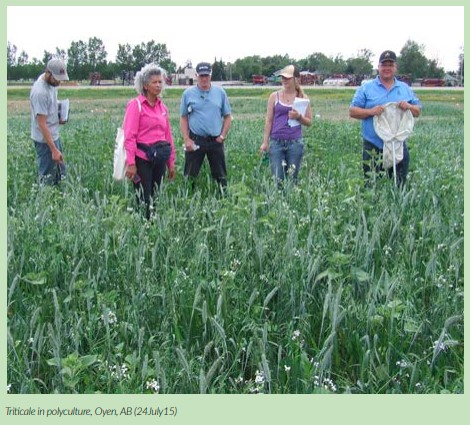Webinar with Dr Christine Jones
Dr Christine Jones will be well known to anyone that has been studying soil health or regenerative farming as her
reputation spreads far and wide. I first saw her speak at Groundswell in 2017 and have spent many hours watching
YouTube videos ever since. Christine is renowned for speaking about the Liquid Carbon Pathway which explains how
carbon is a dynamic product in the soil.

Carbon is a hot topic in agriculture across the world at the moment, mainly as a commodity that could be sold to buyers that need to offset their corporate carbon footprint. I believe that this is missing a fundamental piece of the jigsaw which is that Carbon is the basic currency in the soil. It is traded for nutrients and other essential resources by plants and microbes, so the loss of carbon in our soils means that they simply don’t function as well as they should. By paying attention to carbon management we can improve function, reduce inputs, produce food that is better for consumers and crucially be more profitable. In addition it is clear that carbon plays a key role in providing wider Ecosystem Services, including climate resilience.
Dr Jones explained how photosynthesis was the real foundation for all life, as it uses free resources to drive energy into the system. Green plants use light, CO2 and water to create carbohydrates that are exuded into the soil through plant roots. Here the microbes in the rhizosphere exchange the carbon for other products that the plant needs, which in turn facilitates more photosynthesis and the cycle continues. In a monoculture, the variety of microbes in the rhizosphere is quite limited, but in a multi-species situation there is an increase in both number and diversity of the microbial population. This diversity can be increased by the improved photosynthetic efficiency of a diverse sward, as the variety of leaf architecture means that more sunlight is intercepted. More light interception delivers greater photosynthetic capacity, driving more exudates into the soil that feed higher populations of microbes.

So why are microbes important? I can remember being taught that it was the roots that took up the nutrients, but in fact it is the microbes that facilitate this. They are far more efficient and numerous, as long as we look after them properly. Microbes have a huge array of different functions and services that they can provide, so diversity of the population leads to a wider variety of services being provided. Dr Jones listed some of these – aggregate formation; Nitrogen Fixing; disease resistance; frost resistance; drought and flood tolerance.
In my own experience of using diverse cover crops, soil structure improvements are the most obvious and rapid visual changes (VESS Assesments). Dr Jones explained that aggregates make the soil particles far more water stable, preventing erosion. However they also provide improved drainage in times of water excess and hold moisture inside them for use in times of drought. These can be huge benefits and as climatic conditions become increasingly challenging, surely they cannot be ignored.

The diverse mixes were also shown to deliver immediate benefits in a growing crop. An example was shown where a monocrop of Triticale was grown in a field next to a mix of Triticale with Oats, Radish, Sunflower, Peas, Beans, Chick Peas and Millet. The history of the field was uniform, but the monocrop succumbed to drought quite badly. Incredibly, despite the increase of competition for available precipitation, the multi species crop showed no signs of moisture stress and grew really well. This can only be explained by the diverse microbiome of the multi species crop accessing moisture and nutrients that the monocrop could not reach. At Oakbank we have seen similar results when using Companion Crops in winter oilseed rape, with an improved nutritional profile in the leaf analysis compared to a monocrop with the same applied nutrition.

Improved nutrients within the plant are not just good news for the growing plant, as they also provide enhanced nutritional value for grazing animals. Dr Jones mentioned work carried out by Dr Fred Provenza that showed how a mixed sward containing grasses, legumes, tall and short herbs (or forbs) was able to deliver significant benefits to the animals. The diversity in this type of mix delivers a diet that is high in secondary plant compounds such as bioflavonoids, carotenoids, polyphenols and anthocyanins. Dr Provenza’s work showed that these compounds delivered a number of benefits:
• Increased microbial biodiversity in the gut
• Increased ability to digest a wide variety of feeds
• Improved feed conversion efficiency
• Improved immune function
The question you could be asking yourself is could this translate to nutrient density and diversity in human food stuffs, which then leads onto the discussion about using food as medicine. I saw an excellent presentation on this given by Dr Daphne Miller at No Till on the Plains last year (available on YouTube) called “Our Soil, Ourselves”, recommended viewing!
Possibly the most memorable part of Dr Jones presentation was when she showed the effect that high analysis fertilisers have on the rhizosphere. In simple terms it could be stated that products such as DAP almost sterilised the roots, leaving them white, with no rhizosheath and no microbial interactions. It was explained that if the main nutrients were provided in such high concentrations, that the plant put no effort into exudation. This can often give the impression that all is well in the early stages of crop growth, with rapid lush green plants coming through. However, these plants have none of the resilience to stress that can be provided by effective associations with the microbiome, so they succumb to pests, disease and drought far more quickly.
Dr Jones recommended looking at the work undertaken in the Jena Biodiversity Experiment and summarised the effect of plant diversity as follows:
• Restores Ttopsoil
• Replaces fertiliser
• Renders insecticides obsolete
• Makes fungicide redundant
• Supports beneficial insects
• Displaces weeds
• Improves landscape function
The thorny subject of testing for soil carbon was also discussed, with Dr Jones explaining how the sub-soil was very important for stable carbon sequestration. An analysis of 2700 soil profiles had shown that 42% of the carbon was stored in the 0-20cm horizon, but 58% was stored in the 20- 100cm zone.

My interpretation of those figures is that the subsoil is where it’s all happening in regards to the sequestration of stable soil carbon. We need to concentrate our efforts on having deep rooted plants in order to capitalise on that potential. Most measurements are only taken on the 0-10cm or 0-15cm increment of the soil profile, hence they miss the bulk of the soil carbon. On one farm in New Zealand, that Dr Jones calls “The Carbon Capture Farm”, the difference between monoculture ryegrass swards and a diverse mix has been demonstrated at different soil depths. The soil on this farm is a pumice with little natural fertility, but the soil building that could be seen in just a few months was quite remarkable.
The figures shown are the Soil Carbon % and it can be seen that at the deeper zones, the diverse roots have sequestered approx. double the amount of carbon as the monoculture. These types of mix are effectively what is being facilitated by the current Countryside Stewardship options AB15 and GS4, so it would be worth paying careful attention to what is in your seed mix to extract the most value from this “fallow” period. Remember that carbon is the currency for many more benefits, so bank it while you can and it will pay back over time. Plant roots have been shown to build soil carbon between 5-30 times faster than the carbon derived from above ground biomass. This goes back to what Joel Williams discussed, saying Roots not Shoots are what you should be looking for.

So can farmers really get paid for soil carbon? Well in a number of countries this is certainly true, but the first one was Australia where there is a Federal Government Climate Solutions Fund. Farmer Niels Olsen sold the world’s first carbon credits under a government regulated scheme in March 2019. His soils were recorded as sequestering 11.2t CO2e/ha in 2019 and in 2020 this figure went up to 13.7tCO2e/ha, resulting in a total of 24.9 tCO2e/ha sequestered in 2 years, using multi species swards. Researchers estimate that 2/3 of the carbon was derived from root exudates. If these figures seem very high, remember that to get the tonnes of carbon you need to multiply the CO2e figure by 0.27, so 2019 was about 3 tC/ha and 2020 was another 3.7 tC/ha. The value of carbon credits are expected to rise significantly from their current position, so these numbers could become very attractive, whilst still farming the land remember!
Dr Jones overall message was that the ‘secret’ to sequestering soil carbon was to stimulate the soil microbiome, which requires greater plant diversity and less synthetic inputs. My suggestion is to start looking at this on your own farm on a small but meaningful scale, my clients that have done this rarely go back and feel very positive about the changes.